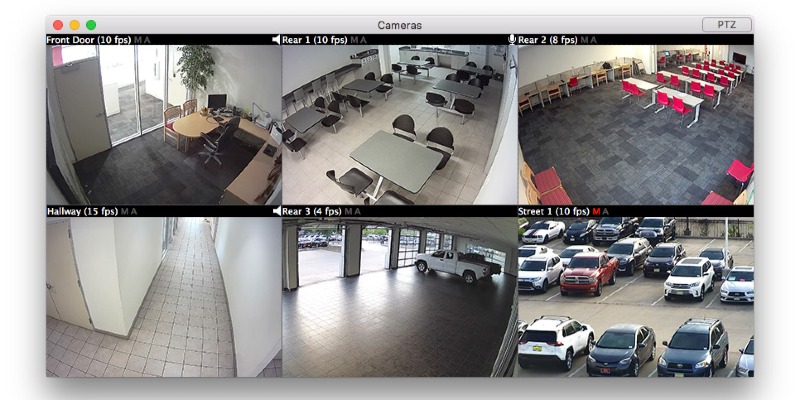
Two observed year-long datasets of boating traffic were used, with a year-long gap between them. Predictive models were built in a Bayesian regression modelling framework to determine the daily distribution of recreational boating traffic at two ramps in Western Australia based on climatic variables (temperature, humidity, wind speed, direction and gust, and sea level pressure) and some temporal classifications (month and day type).
#SECURITYSPY 4.2.10 SERIES#
We predicted recreational boating traffic during these 'gap' periods using historical camera data and covariates to complete the time series data. Typically, these data are used along with other periodic survey information and camera data between these surveys may not be read, creating gaps in the time series. This study provides relevant statistical support to address these challenges of digital camera monitoring of boating effort, to improve its utility to enhance recreational fisheries management in Western Australia and elsewhere, with capacity to extend to other areas of application.ĭigital camera monitoring data on recreational boating traffic are often manually interpreted and the reading cost can be expensive. Notably, missing data problems and the cost of data interpretation are among the most pertinent. However, there are challenges in the use of digital camera monitoring that need to be resolved. boat ramp surveys), digital cameras provide a cost-effective method of monitoring boating activity and fishing effort, including night-time fishing activities. In recreational fisheries research, digital camera monitoring has become a viable option for probability-based survey methods, and is also used for corroborative and validation purposes. This project has provided an extensive permanent digital library of camera images that can be made available for use in subsequent ecological and fisheries-related studies.ĭigital camera monitoring has evolved as an active application-oriented scheme to help address questions in areas such as fisheries, ecology, computer vision, artificial intelligence, and criminology. Such an approach would require more formal research arrangements to be established between the various state agencies responsible for managing wildlife and fisheries. The ability to view live camera footage could assist with the scheduling of BoG surveys so that on-site surveys can be conducted regularly and safely. Instead, camera monitoring at strategic ASL colonies would provide a realistic prospect of collecting long-term abundance data for hard-to-reach Western Australian colonies which remains a challenging prospect using BoG surveys. Installing and maintaining remote cameras at 32 known ASL breeding colonies would be cost-prohibitive and logistically impractical. In summary, the diversity and remoteness of ASL colonies in WA means that no single survey method is likely to be appropriate for the monitoring of all colonies. To ‘value-add’ from the original aims of the study, remote piloted aircraft (RPA) operations were also conducted within the Recherche Archipelago to provide a greater understanding of the potential application of both methods for on-going monitoring. The time series analysis applied to the Buller Island data provides the most detailed information within a single reproductive cycle at a WA colony. Day to day variations in the relative abundance of ASLs were estimated for Buller Island and Wickham Island, with limited data on ASL abundance collected for Haul Off Rock due to camera outages. These data comprised the number of ASLs identified within the field of view (FoV) of each camera which represented relative abundance estimates for each colony. Overall, counts of ASLs were obtained from the analysis of 563 days (~6,700 hours) of camera footage.

Remote cameras and associated infrastructure were installed at Buller Island, Haul Off Rock and Wickham Island in the second half of 2018, after which camera images were manually interpreted with the intention of capturing data over an 18-month period (i.e., approximately one reproductive cycle).
#SECURITYSPY 4.2.10 UPDATE#
This report outlines the strengths and limitations of this novel approach rather than providing an update on the population status of ASLs. The research was undertaken by the Department of Primary Industries and Regional Development (DPIRD) to assess whether the analysis of camera footage could be used to estimate ASL relative abundance, providing an alternative to the traditional “boots on the ground” approach (hereon in “BoG”) of visiting colonies to count animals.

This project trialled the use of remote cameras to monitor the relative abundance of Australian sea lions (ASLs, Neophoca cinerea) at three Western Australian (WA) breeding colonies.


 0 kommentar(er)
0 kommentar(er)
